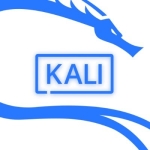Red Hat Enterprise Linux serves various functions, including operating system tasks, satellite management, and OpenShift deployments. Additionally, we utilize Red Hat's Insight and Subscription Manager products.
Our organization utilizes Red Hat Enterprise Linux, both on-premises and in the cloud. While we maintain on-premises systems, certain departments also leverage Red Hat Enterprise Linux in a cloud environment. As the license manager for Red Hat in our organization, I can confirm that we have a substantial number of Enterprise systems operating in the cloud.
Red Hat Enterprise Linux offers key benefits for enterprise management, including features such as patch management, resource isolation, enhanced stability, and improved performance through automation. Unlike its earlier versions, Red Hat now provides these functionalities out-of-the-box, eliminating the need for extensive scripting and streamlining administrative tasks. Red Hat introduced an online patch management system in Red Hat nine, similar to what AIX offered years ago. This system, which likely will be included in Red Hat ten and eleven, allows for online patching without requiring a reboot. This is a significant advantage for enterprise companies who cannot afford downtime, making Red Hat an even more attractive option for them.
Looking beyond a Red Hat-centric view, hybrid cloud computing significantly enhances customer service. Whether through new service offerings, modernized workflows, or improved scalability, automation, and high availability inherent in cloud solutions, the benefits are clear. Furthermore, Red Hat Enterprise Linux provides stability, avoiding the reboots and challenges often associated with Windows environments. Therefore, hybrid cloud adoption is a strong strategy for enterprise companies, offering substantial advantages.
To enhance future development centralization, our development teams are transitioning to Red Hat Enterprise Linux on our development servers.
Red Hat Enterprise Linux has robust built-in security features that effectively contribute to risk reduction, business continuity, and compliance maintenance. Red Hat demonstrates a solid commitment to security by providing timely updates and fixes to its customers. While the operating system itself is secure, it's important to note that Red Hat Enterprise Linux provides a foundational image that requires further hardening through the implementation of security controls. Red Hat empowers users with a platform and a range of hardening options, enabling them to tailor security measures to their specific application needs. Furthermore, Red Hat's rapid release of fixes and updates, often within a day or two of a vulnerability discovery, ensures that customers have access to the latest security enhancements.
The portability of applications and containers built on Red Hat Enterprise Linux fosters organizational agility by enabling a continuous cycle of learning, trying, adapting, and iterating. Containers offer a streamlined approach to development, allowing for rapid deployment and effortless updates. If a containerized application doesn't work, it can be quickly destroyed and recreated with updated components, significantly reducing deployment time compared to traditional methods. This rapid iteration aligns perfectly with agile principles, enabling organizations to respond swiftly to changing needs and requirements.
Red Hat Satellite provides patching information and compliance percentages for our systems, but in a multi-departmental enterprise environment, Red Hat Insights offers a more comprehensive view. Insights synchronizes data from Satellite and provides a centralized platform to monitor compliance across different application sectors. This addresses the limitation of Satellite, which may not be accessible to all stakeholders. Insights' API-based functionality allows integration with ServiceNow, creating a single pane of glass view of compliance for various teams. Furthermore, the Insights client provides granular visibility into vulnerabilities, further enhancing transparency and management capabilities. This integration streamlines compliance monitoring and improves overall efficiency.
Red Hat Insights provides vulnerability alerts and guidance. While it doesn't necessarily affect uptime, the severity of the vulnerability determines the response. High-severity vulnerabilities require immediate evaluation to assess their impact. Multiple security layers within the environment may mitigate immediate risks. However, vulnerabilities should be addressed promptly. Insights enhance transparency and provide detailed information for timely action.
Red Hat Enterprise Linux offers many features I appreciate, especially the increasing maturity of the operating system and its automation platform. The automation platform, in particular, has significantly evolved over the past three years. Satellite, now known as Insight, is another excellent product, providing easy and convenient patch management for both managed and unmanaged systems. Its reporting on users, vulnerabilities, and other key information is also quite valuable. Having used Red Hat since version three and now working with versions eight and nine, I'm consistently impressed by its progress. The preview of Red Hat ten looks amazing, and I plan to implement it soon after its release.
The area of improvement is patch management, specifically isolating kernel and operating system patching to prevent downtime for enterprise applications.
Red Hat Enterprises Linux is stable, and improvements are constantly made.
We are not extensively using the scalability features, but the documentation and technology are growing.
I am generally happy with Red Hat's customer service and technical support. There are challenges with different time zones, but overall, the service is satisfactory.
Red Hat Enterprise Linux offers a straightforward pricing and licensing model. The subscription manager provides clear visibility into license usage and facilitates tracking usage growth over time. Although the tool is still under development, Red Hat is actively collaborating with customers to improve its features and functionality. The subscription manager enhances transparency by enabling accurate tracking of license consumption and ensuring alignment with customer needs. Red Hat Insights, working with the satellite, further strengthens transparency by automatically calculating and reporting license usage. This comprehensive approach simplifies customer license management and promotes clarity in supplier relationships.
Red Hat Enterprise Linux is a solid operating system, earning an 8 out of 10 rating. While no OS is perfect, and there's always room for improvement, Red Hat effectively meets the evolving demands of the business market.
While numerous open-source operating systems are available for development, enterprise-class companies require the stability and support of enterprise-level solutions. Red Hat Enterprise Linux bridges this gap by offering a forum for feedback and collaboration, allowing users to directly influence feature improvements and updates. Red Hat Enterprise Linux effectively combines the flexibility of open source with the robust support and reliability required by enterprise-class customers, unlike many other open-source operating systems that lack this level of responsiveness.
Our focus is on the enterprise support and open mindset Red Hat provides, looking to customer benefits and services.




















